In the early 1960s, Aston Martin and Ferrari were in a heated battle for supremacy in the World Sports Car Championship. It seemed as if every season brought about a new, race-ready vehicle to ensure each company’s victory, and the teams were consistently fighting each other for top honors. Competition was just as fierce in the showroom. Both companies were busy producing exciting and exceptional machines to appeal to their high-end clients, mainly in an effort to continue funding their racing exploits.
Aston Martin changed the game in 1959 by winning that year’s 24 Hours of Le Mans with a decisive 1-2 victory, with four Ferraris left chasing in their rearview mirrors. As Ferrari updated the aging 250 GT “Tour de France” with the SWB Berlinetta, Aston Martin introduced the DB4GT in an effort to level the playing field, but it was not enough. Looking to hold back the onslaught of competition-specification Berlinettas, Aston Martin knew it needed something that would take the DB4GT to the next level.The solution was to approach an outside coachbuilder who could utilize their existing platform yet produce a new car that was both more attractive and competitive than its predecessor. The DB4GT was by all accounts a tough act to follow, but Carrozzeria Zagato was not one to shy away from a task. This would be an Aston Martin unlike any other, and when the completed product was unveiled at the 1960 London Motor Show, it was clear that Zagato had fashioned exactly what Aston Martin needed.
Considered by many to be the coachbuilder’s finest design, the DB4GT Zagato is instantly recognizable as both an Aston Martin and a Zagato, thanks to the famed carrozzeria’s deft ability to masterfully craft distinctive design elements from each company into one harmonious work of art. Boasting a slightly elongated nose with a more pronounced grille, visually the car appears much more aggressive than the outgoing DB4GT. At the rear, the taillights were set into the fenders, and the C-pillar was reduced by featuring a larger rear windshield. While the DB4GT was already a highly attractive automobile, the Zagato coachwork gave the Aston Martin a more voluptuous appeal, smoothing out the harder edges in favor of a more dynamic and fluid shape. Changes were more than just skin deep, as Zagato and Aston Martin also endeavored to make this car faster than its standard brethren, reducing nearly 50 kilograms of weight and adding 12 horsepower to the total output.
Chassis Number DB4GT/0186/R
The 14th DB4GT to be tailored by Zagato, chassis DB4GT/0186/R was completed on December 19, 1961, and then shipped to Australia shortly thereafter. Laurie O’Neill of Strathfield, a suburb of Sydney, New South Wales, would be the first lucky owner. A successful businessman, O’Neill made much of his fortune from quarrying but also held the franchise to Peterbilt trucks in Australia. In his spare time, his preferred hobby was racing, and he owned a great variety of sports cars, ranging from Aston Martins and Ferraris to a Porsche 935 along with a handful of grand prix cars.
The DB4GT Zagato would be O’Neill’s weapon of choice for the 1962 season, and the Aston would bring him great success. With Doug Whiteford behind the wheel, the car was undefeated in its first two outings at Calder and Longford on February 25 and March 3, respectively. On March 5 in Longford, Whiteford drove 0186/R to another 1st overall in the South Pacific GT Championship and a 4th-place finish in the Sports Car Championship on the same day. Whiteford and 0186/R notched one more 4th overall in the GT Scratch Race but failed to finish at the Sports Car Trophy race the following weekend due to tire issues. This would prove to be the car’s worst finish for the 1962 season. The Zagato would finish in no less than 3rd place over the next five events while driven by Laurie O’Neill himself and Ian Georghegan. They ended the season on a high note, finishing 1st in class in the GT Scratch Race at Katoomba on October 28, 1962.
That year would mark the end of the DB4GT Zagato’s racing career, as O’Neill sold the car prior to the 1963 season. For the next 30 years, the DB4GT Zagato would remain in Australia with only two subsequent owners. Colin Hyams acquired the car immediately following O’Neill’s ownership in 1963, and it is believed that it was shown at the 1967 Melbourne Motor Show during his ownership. Hyams then sold the car to Alex Copland in 1968, and it would remain with Copland in static storage for over 20 years.
Aston Martin DB4GT by Zagato – Car Profile Continued
In 1993, the Aston Martin was acquired by G.K. Speirs of Aberdeen, Scotland, through Goldsmith and Young, who returned the car to its native land. There they performed a minor restoration so the car could be entered into vintage racing events. During this time, the Aston was frequently campaigned at such events as the 1997 Goodwood Festival of Speed and the Goodwood Revival in 1998 and 1999. The DB4GT once again returned to Australia in 1998, where it was driven for demonstration laps at the Melbourne Grand Prix and the Classic Adelaide 500 before returning to the U.K.
Purchased by Peter Read from Speirs, Read decided that 0186/R was deserving of a complete restoration to concours standards. The process took two years from disassembly to completion, with work divided between Aston Martin specialist Richard S. Williams in England and Carrozzeria Zagato’s own facilities in Italy. No stone was left unturned to bring the car back to as-new condition, and although original metal was used wherever possible, Zagato’s own craftsman fabricated new panels, using the original bucks, when absolutely necessary. Williams completely rebuilt the car’s mechanical components, including the engine, suspension, and brakes, and was also commissioned to fully restore the interior as well as complete final assembly when the bodywork returned from Italy.
Following completion in 2002, chassis 0186/R hit the Concours circuit, where it immediately accrued an enviable record of accolades. On its very first outing at the Louis Vuitton Concours at the Hurlingham Club in June 2002, the DB4GT Zagato not only won its class but was also named Best of Show. That win ensured an invitation to the Bagatelle Concours d’Elegance later that month, where the Aston also won its class. Further Best in Class honors were also earned at Villa d’Este, Pebble Beach, and the Neillo Concours in 2007, as well as at the Presidio of San Francisco Concours and the Carmel-By-The-Sea Concours in 2009. At virtually every event the car attended, it found itself driving across the stage in honor. Shown most recently at The Quail: A Motorsports Gathering in August of 2013, the car remains breathtakingly beautiful. Not just a Concours queen, 0186/R has also been driven respectfully on several tours, where it performed marvelously and without issue. As one of the finest DB4GT Zagatos in existence, it will surely continue to excel at future events.
Once in a Generation
With only 19 DB4 GTs graced with coachwork by Zagato, just having the opportunity to see a DB4GT Zagato is a dream few realize. So treasured by their owners, not a single example has traded hands for the greater part of a decade. While its direct competitor from Italy would be the Ferrari 250 GT SWB Berlinetta, it would be more appropriate to compare the car to the vaunted 250 GTO, though both were produced in greater number. Both Aston Martin and Ferrari pushed the envelope of performance when these models were new, both boast wins on the world’s most competitive stage, and both boast handcrafted aluminum bodywork with designs worthy of inclusion in any major art museum. However, in terms of rarity, nearly half as many DB4 GT Zagatos were built compared to the 250 GTO.
As an engineering masterpiece and a design icon, the Aston Martin DB4GT Zagato has few peers, and its significance to Aston Martin, Zagato, and its genre simply cannot be overstated. The DB4GT Zagato embodies the essence of Driven by Disruption and deserves to be regarded not only as a historically significant machine but also as a groundbreaking work of art.
—
This 1962 Aston Martin DB4GT by Zagato will be offered at the RM Sotheby’s New York City sale, scheduled for December 10, 2015 at Sotheby’s headquarters in Manhattan.
Aston Martin DB4GT by Zagato – Photo Gallery
[Source: RM Sotheby’s; photos: Patrick Ernzen]



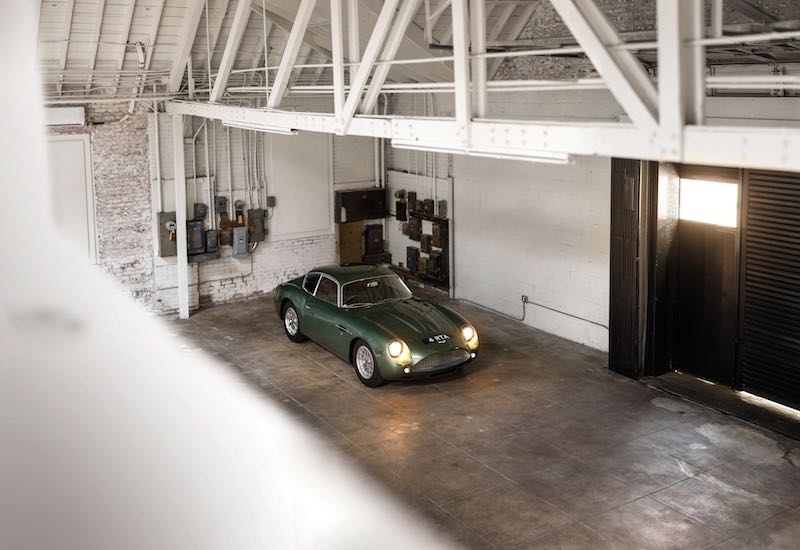


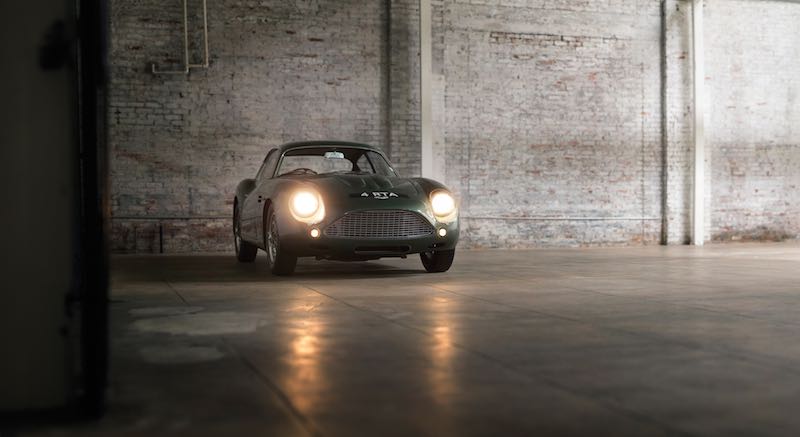





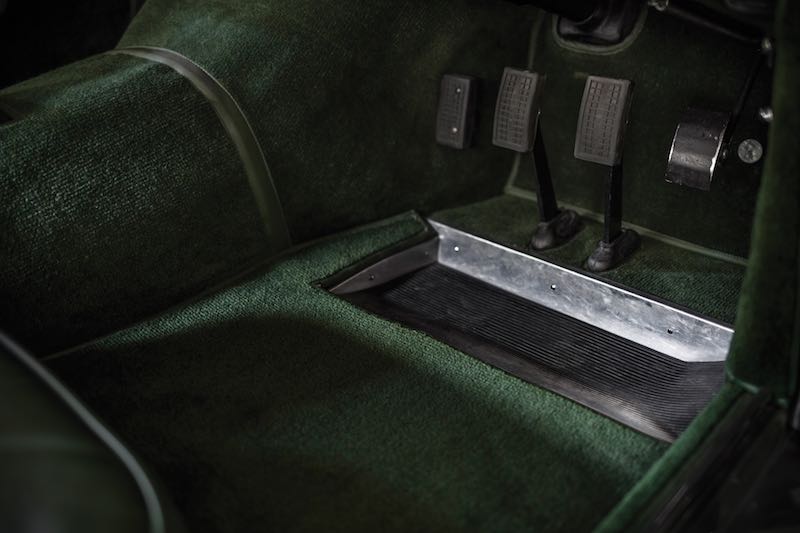





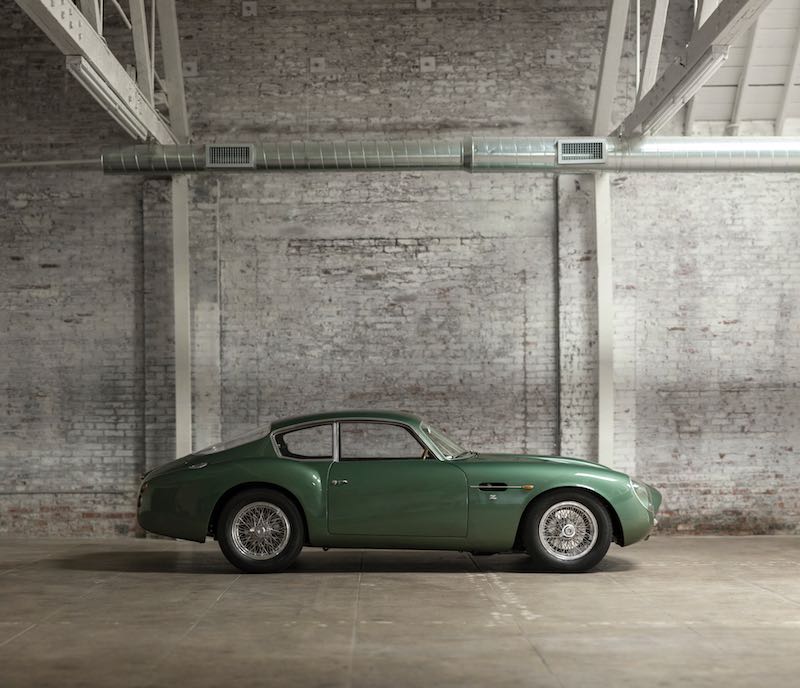








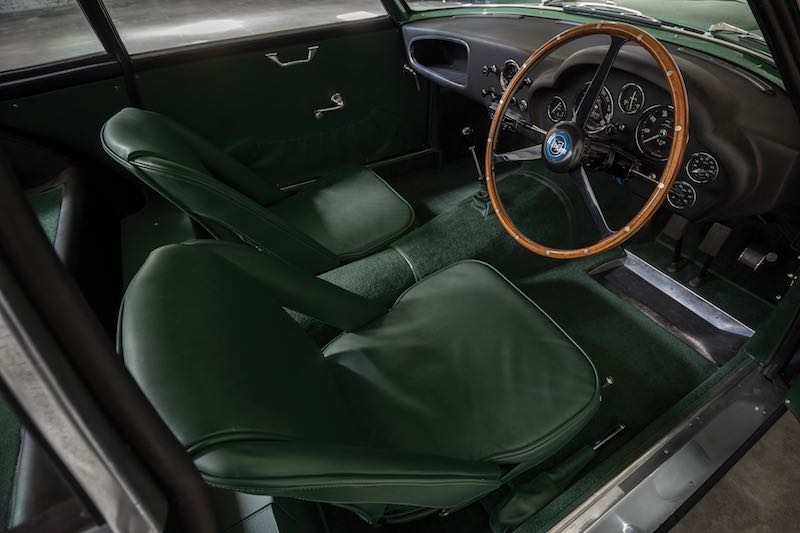





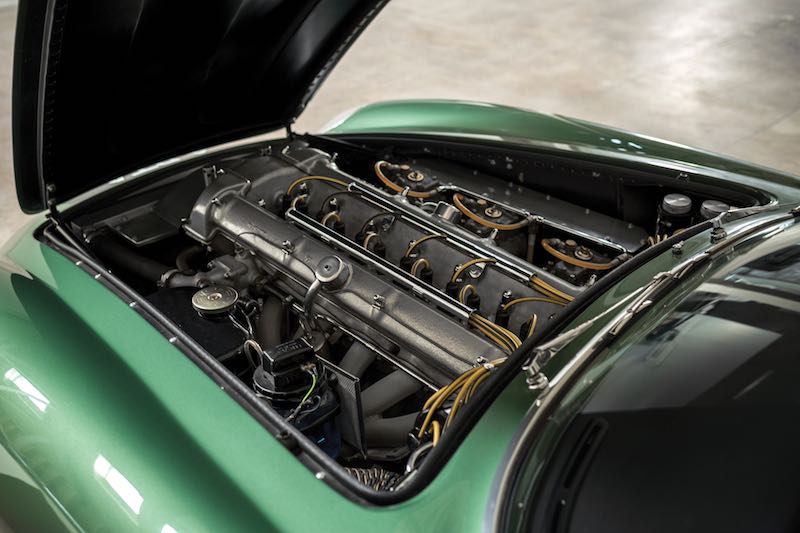

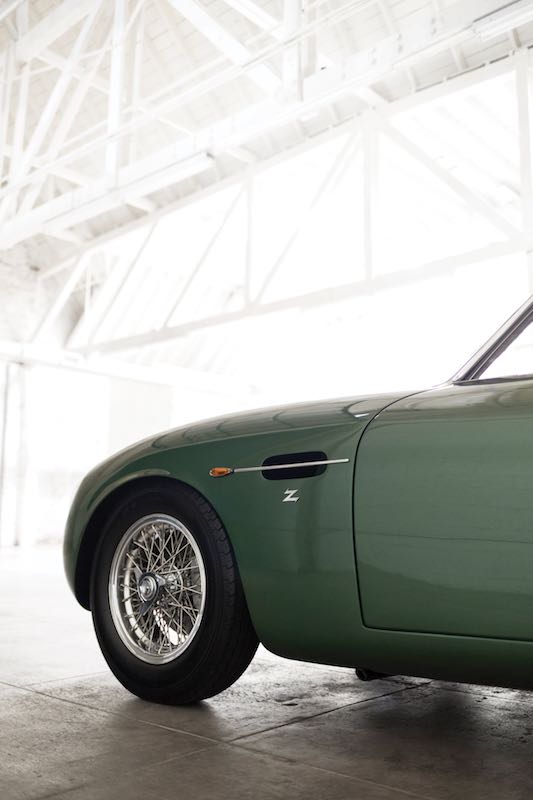






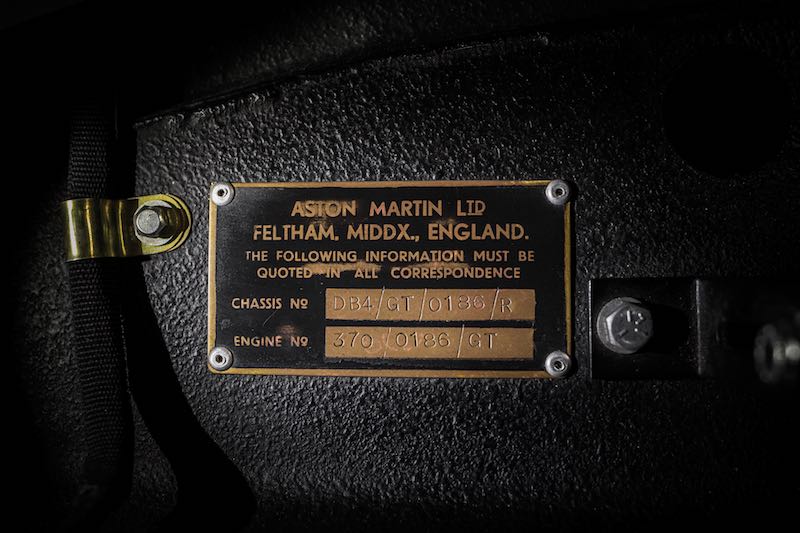







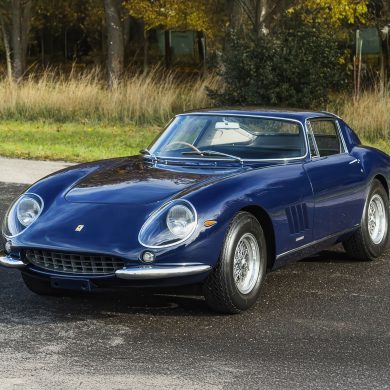


In the past ten minutes I have become an International Assassin and my first and only fee will be the auction amount for the Aston Martin!! Probably the most desirable car ever.
Brings back memories of my youth. In the mid-1960s I worked for a London based car-shipping company. We shipped 2 VEV to the USA around 1966 but I cannot recall the port to which it was consigned. Fortunately it did not accompany three other valuable (even then) cars – a Bentley R-Type, a Ferrari 250 GT and a Jaguar E-Type (the E-Type was to be on the Jaguar stand at the New York Motor Show) – which, after they had been unloaded on to the quayside at Newark NJ, were raced around the port by longshoreman until the Ferrari and Jaguar crashed, the Jaguar being written off.
Thank goodness for Ro-Ro and containerisation.
Love this car. Saw it race in period at Longford in Tasmania although back then it was a colour similar to Old English White. Although the green suits it, it is a shame it was not restored to it’s original colour